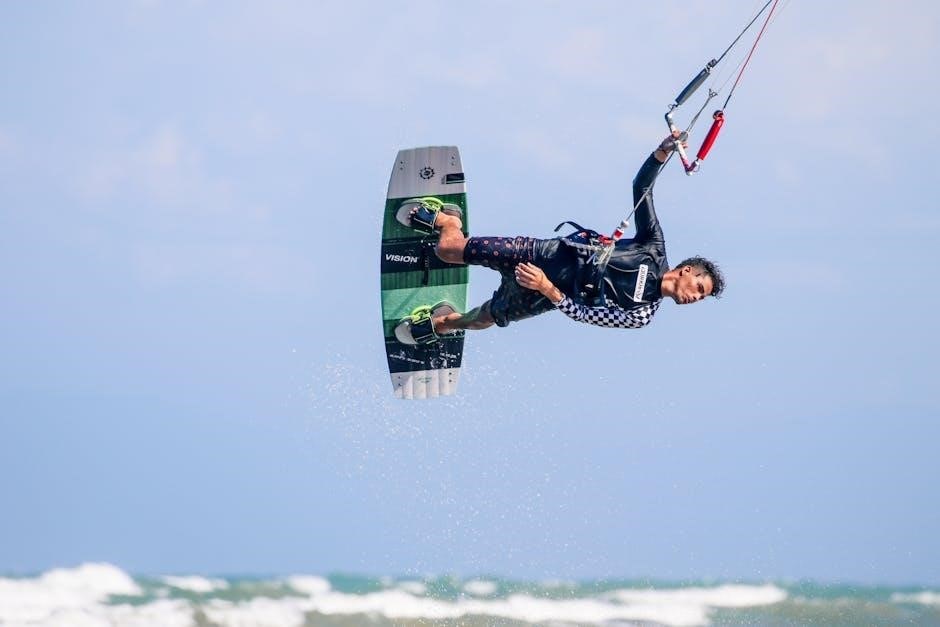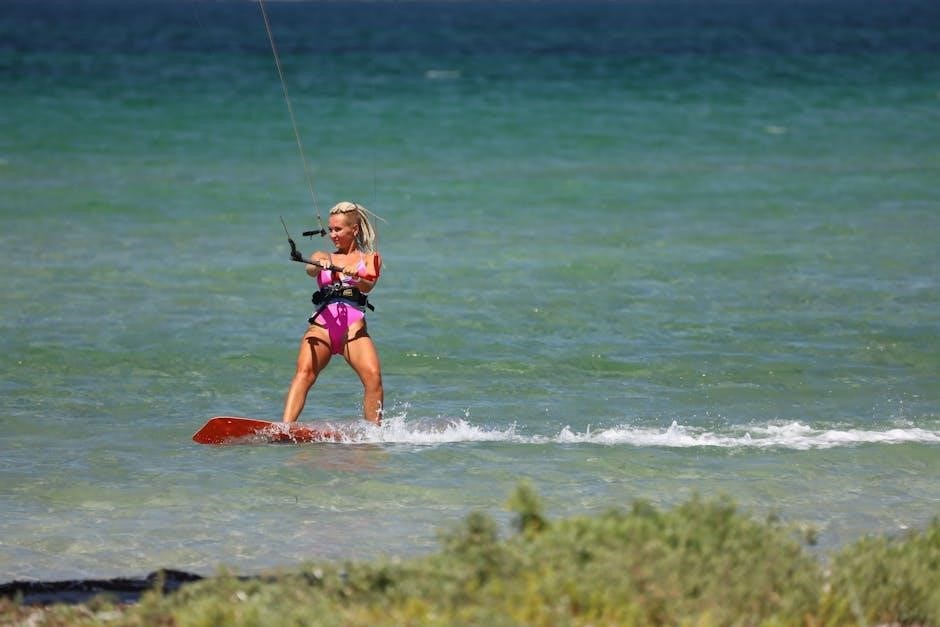Kitesurfing board size guide is crucial for riders to determine the perfect board size‚ using factors such as height and weight to ensure a safe and enjoyable experience with kitesurfing
Understanding the Importance of Board Size
Choosing the right board size is essential for kitesurfers as it affects their performance‚ safety‚ and overall experience. A board that is too small may be difficult to control‚ while a board that is too large may be slow to turn. The importance of board size lies in its ability to provide the right amount of floatation‚ stability‚ and maneuverability for the rider. Factors such as the rider’s height‚ weight‚ and skill level all play a role in determining the ideal board size. Additionally‚ the type of kitesurfing discipline‚ such as freeride or freestyle‚ also influences the choice of board size. By understanding the importance of board size‚ kitesurfers can make informed decisions when selecting a board‚ ultimately enhancing their kitesurfing experience. With the right! board size‚ kitesurfers can ride with confidence‚ perform tricks and maneuvers with ease‚ and enjoy the thrill of kitesurfing to the fullest‚ every time they are on the water with their kite and board.
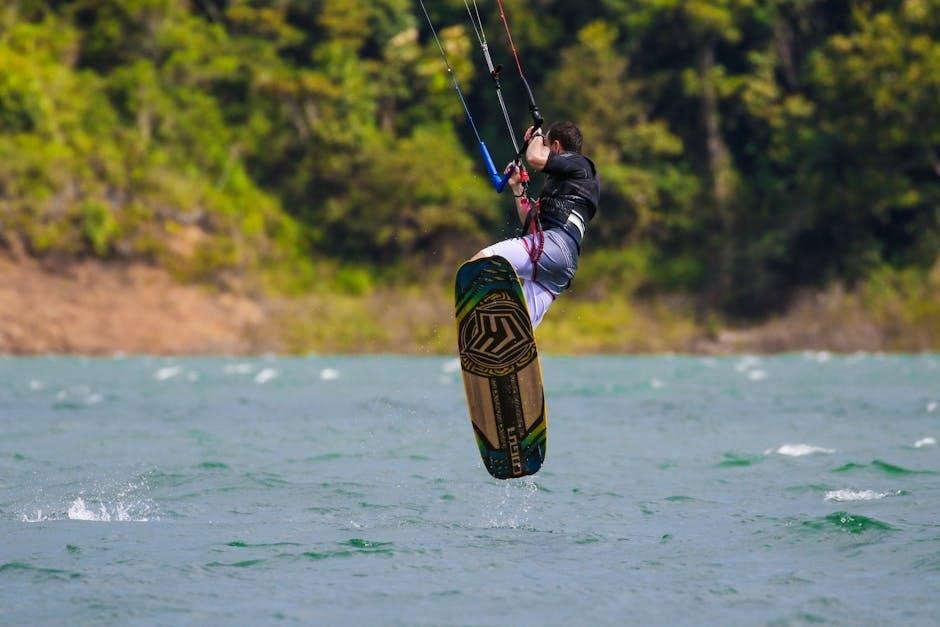
Factors Affecting Kitesurfing Board Size
Several factors affect kitesurfing board size‚ including rider characteristics and conditions that influence the choice of board.
Height and Weight Considerations
When it comes to choosing a kitesurfing board‚ height and weight are important considerations. Generally‚ taller and heavier riders require larger boards to provide stability and support. A larger board will allow them to plane more easily and maintain their speed. On the other hand‚ smaller and lighter riders can get away with smaller boards‚ which are more maneuverable and easier to control. Riders should consider their height and weight when selecting a board‚ as it will affect their overall kitesurfing experience. The internet provides various resources‚ including charts and guides‚ to help riders determine the ideal board size based on their height and weight. By taking these factors into account‚ riders can ensure they choose a board that meets their needs and enhances their kitesurfing experience. This will enable them to ride safely and comfortably‚ and to improve their skills over time.
Experience and Skill Level
A rider’s experience and skill level play a significant role in determining the ideal kitesurfing board size. Beginners typically require larger boards to provide stability and make it easier to learn basic skills such as balancing and turning. As riders gain experience and improve their skills‚ they can transition to smaller boards that offer more maneuverability and responsiveness. Advanced riders often prefer smaller boards that allow for tighter turns and more aggressive riding. According to various online resources‚ including kitesurfing forums and instructional websites‚ riders should consider their skill level when selecting a board. By choosing a board that matches their experience and skill level‚ riders can ensure a safe and enjoyable kitesurfing experience. Additionally‚ riders can consult with experienced instructors or seasoned kitesurfers to determine the best board size for their individual needs and abilities‚ and to continue progressing in the sport. This will help them to improve their skills and enjoy the sport more.
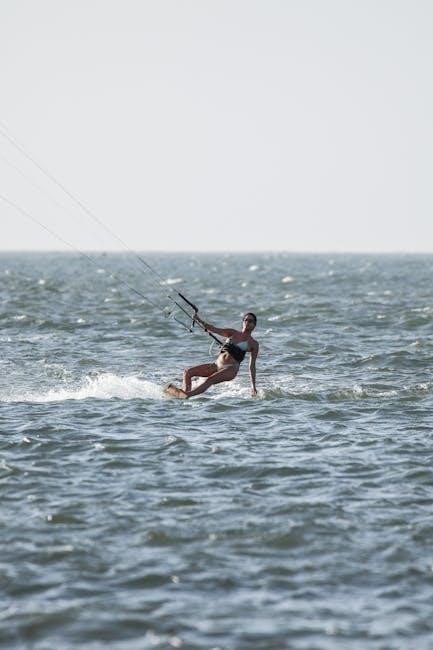
Kitesurfing Disciplines and Board Size
Kitesurfing disciplines require specific board sizes‚ using different techniques and styles to determine the perfect size for each discipline‚ every time‚ always.
Freeride and Freestyle Disciplines
Freeride and freestyle disciplines are popular among kitesurfers‚ requiring specific board sizes to perform tricks and maneuvers. The size of the board depends on the rider’s skill level‚ with beginners requiring larger boards for stability and control. Experienced riders can use smaller boards for more advanced tricks and techniques. A smaller board is ideal for kite loops and freeride‚ while a larger board with boots is better suited for freestyle. Riders can use different boards for different disciplines‚ such as a smaller foot strap board for freeride and a larger board for freestyle. The choice of board size also depends on personal preference‚ with some riders preferring a more responsive board and others a more stable one. Using the right board size for freeride and freestyle disciplines can enhance the overall kitesurfing experience‚ allowing riders to perform at their best and enjoy the sport to the fullest‚ with various techniques and styles.
Wave Riding and Light Wind Conditions
Wave riding and light wind conditions require specific board sizes to ensure optimal performance. For wave riding‚ a smaller board is often preferred‚ as it allows for more maneuverability and control in the waves. In light wind conditions‚ a larger board is necessary to provide enough floatation and stability. The size of the board will also depend on the rider’s weight and skill level‚ with heavier riders requiring larger boards and more experienced riders able to use smaller boards. Additionally‚ the shape of the board is important‚ with wave riding boards typically having a more rounded nose and a squash tail. Light wind boards‚ on the other hand‚ often have a flat rocker and a larger surface area to help the rider stay afloat. By choosing the right board size for wave riding and light wind conditions‚ riders can enjoy a more rewarding and challenging kitesurfing experience‚ with the ability to catch waves and ride in lighter winds‚ using various techniques and styles to navigate the water.
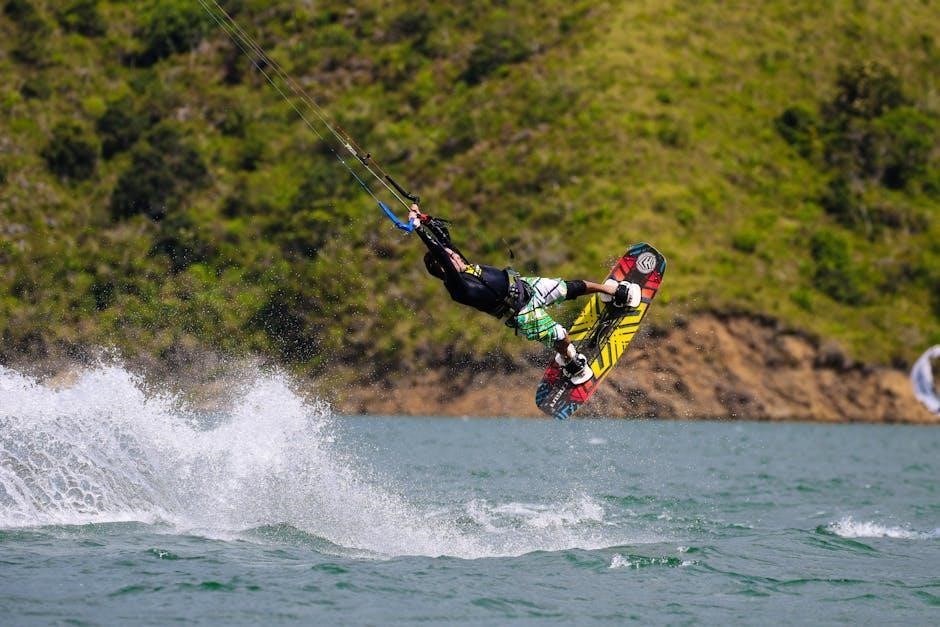
Using a Kite Size Chart
Kite size charts help riders determine ideal kite sizes using wind speed and rider weight to ensure safe kitesurfing experiences always with proper equipment and techniques used correctly online.
Interpreting the Chart
To interpret the kite size chart‚ riders need to understand the relationship between wind speed‚ rider weight‚ and kite size‚ using tables and graphs to determine the ideal kite size for their needs‚ with online resources providing detailed information on how to read and use the charts effectively. The charts typically display wind speed on one axis and rider weight on the other‚ with the corresponding kite size indicated in the intersecting cell‚ making it easy to determine the correct kite size for a given set of conditions. By using the chart‚ riders can ensure they are using the right equipment for their skill level and riding style‚ which is essential for safe and enjoyable kitesurfing experiences. With practice and experience‚ riders can refine their understanding of the chart and make informed decisions about their kite size‚ allowing them to get the most out of their kitesurfing sessions. Riders can find these charts on various websites and online forums.
